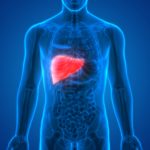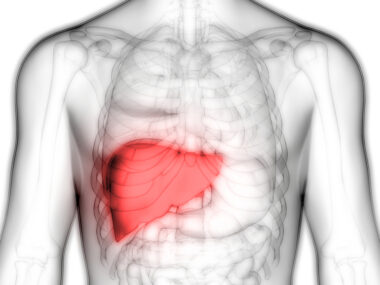Acute Porphyria Linked to Higher Risk of Primary Liver Cancer in Swedish Study
Written by |

Patients with acute porphyria have a higher risk of developing primary liver cancer, a Swedish study has found.
Researchers observed that primary liver cancer was 38 times more likely to occur in patients with acute porphyria than in the general population. This risk was even higher for those with active disease who were older than 50 or had been admitted to the hospital for treatment.
According to researchers, patients who are at increased risk of developing primary liver cancer should be closely and routinely monitored including having ultrasounds beginning at age 50.
The study, “Risk of primary liver cancer in acute hepatic porphyria patients: A matched cohort study of 1,244 individuals,” was published in the Journal of Internal Medicine.
Symptoms of acute porphyria emerge suddenly and may last several hours to days. They result from a deficiency of any of several enzymes involved in the production of heme, a molecule that is required for oxygen transport in red blood cells.
When this enzyme is missing and does not work well, molecules from which heme is formed — called heme precursors — accumulate in the liver and other tissues and may appear in excess in the blood and be eliminated in the urine or stool.
Acute porphyria is linked to an increased risk of primary liver cancer. However, “risk estimates are unclear,” the researchers wrote, as are the specific porphyria types and other factors that put patients most at risk.
To delve deeper into this, researchers looked at data from 1,244 patients who were registered in the Swedish porphyria register, a database that includes all patients who receive a diagnosis of porphyria in Sweden, from 1987 to 2015. Researchers also included 12,333 age- and sex-matched individuals from the general population in the study who served as controls.
There were 1,063 (85%) patients with acute intermittent porphyria, the most common type of acute porphyria. Of the remaining patients, 125 (10%) had variegate porphyria and 56 (5%) had hereditary coproporphyria. Patients had a median age of 36 years at inclusion, and 654 (53%) were female.
During the study period, 266 (21%) patients were admitted to the hospital due to porphyria. Elevated urine levels of porphobilinogen (PBG) — a heme precursor — were found in 494 (46%) of the patients with acute intermittent porphyria.
At a median follow-up of 19.5 years, there were a total of 108 new cases of primary liver cancer. The most common type of primary liver cancer was hepatocellular carcinoma, followed by cholangiocarcinoma.
These cases accounted for 6.7% (83 out of 1,244) of patients with acute porphyria and 0.2% (25 out of 12,333) in the general population. This means that patients with acute porphyria were 38 times more likely to develop primary liver cancer than individuals from the general population.
Next, researchers looked for factors that could put patients at increased risk of developing cancer. They found that patients who had been hospitalized had a 90% higher risk of developing primary liver cancer than those who had never been admitted to the hospital due to porphyria.
Another risk factor for primary liver cancer was an elevated level of PBG in the urine. While none of the patients with a negative test for PBG developed primary liver cancer, those with an elevated PBG had a risk of developing cancer that was 61 times higher than the general population. Moreover, the higher the level of PBG, the greater the risk of developing a primary liver cancer.
The median age at the time of primary liver cancer diagnosis was 71 years among patients with acute porphyria and 74 years in individuals from the general population.
None of the patients developed a primary liver cancer before the age of 50. Among the 175 patients with acute porphyria who were older than 50 and who had elevated PBG levels in the urine and/or had been hospitalized due to porphyria, the incidence rate of new cases of primary liver cancer amounted to 1.7% per year.
“Clinically identified patients with [acute porphyria] … should be advised to undergo biannual ultrasound surveillance from the age of 50 years,” the researchers concluded.






